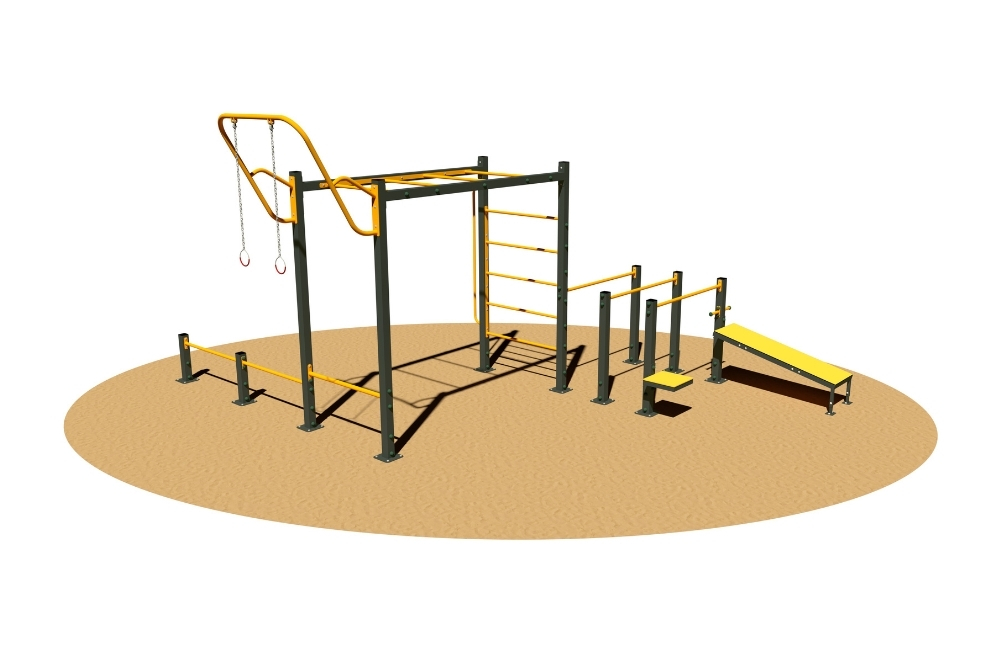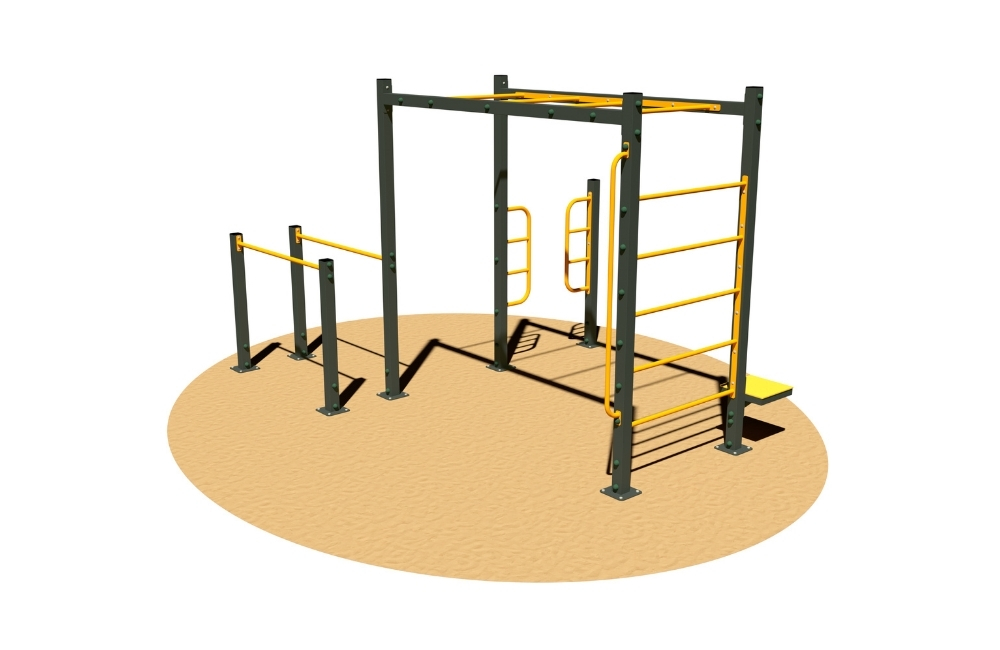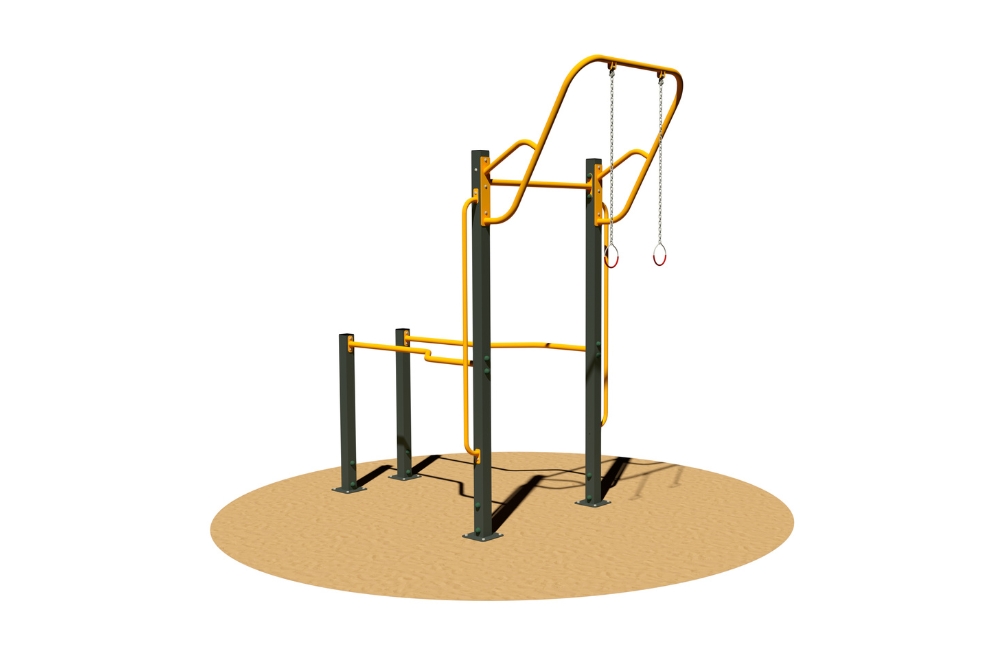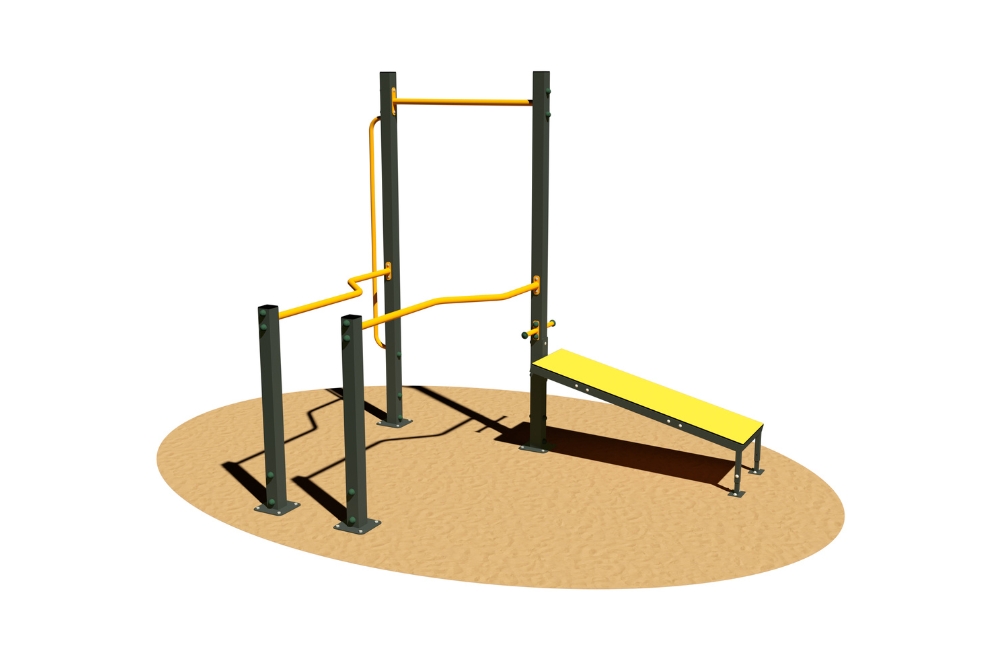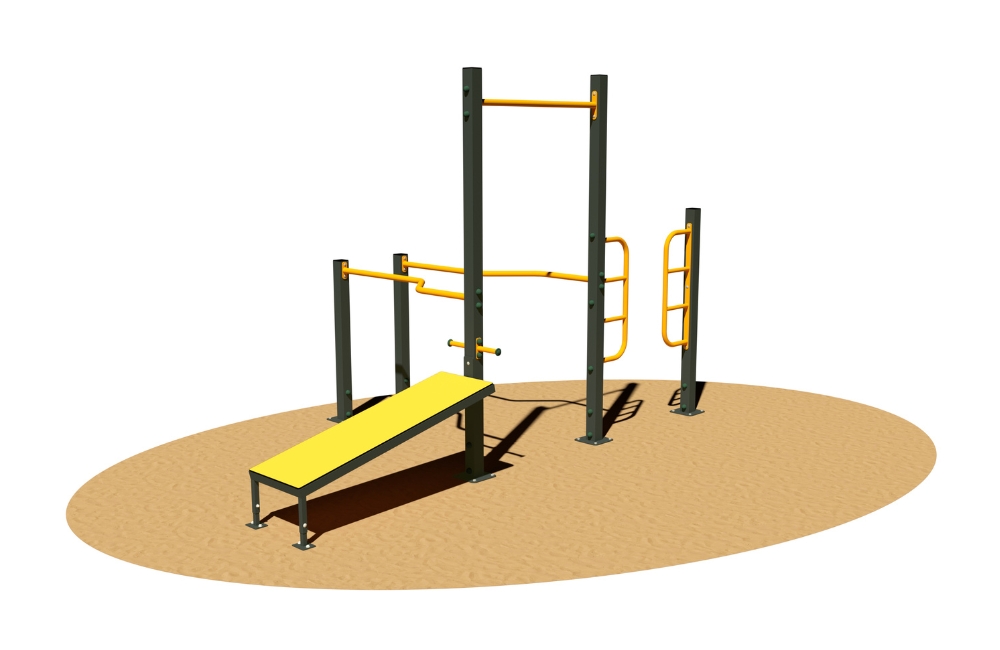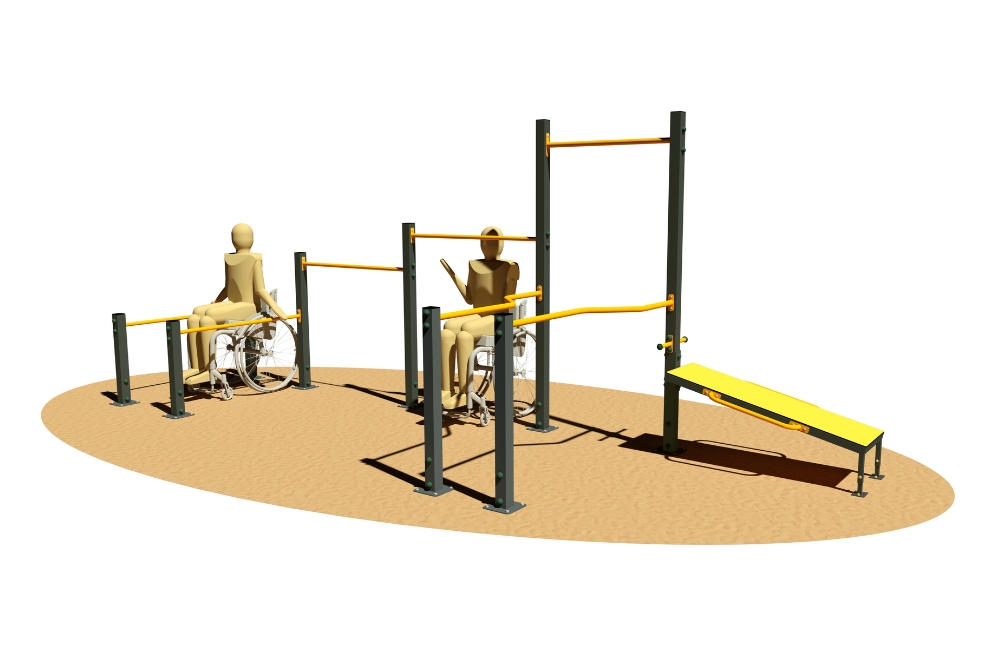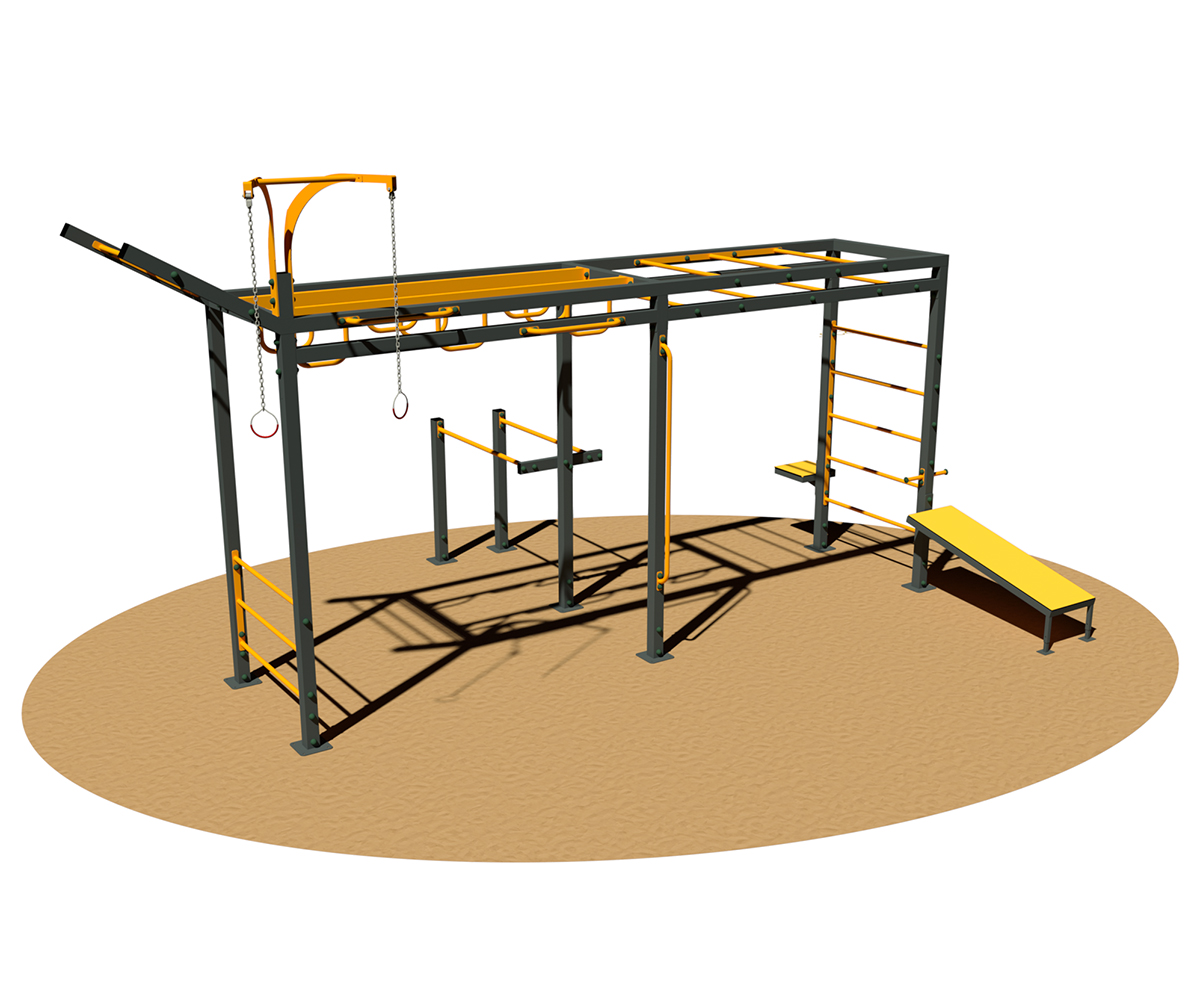Calisthenics
Giochipark produces Calisthenics training structures specifically designed for outdoor installation in parks and gardens. The Calisthenics equipment allows for the practice of strength and balance exercises for maintaining physical well-being.
Calisthenics Atlante
Galvanized steel calisthenics station with elements for complete training.
Calisthenics Teseo
Galvanized steel calisthenics station with elements for bodyweight exercises.
Calisthenics Spartaco
Galvanized steel calisthenics station with elements for pull-ups and suspension exercises.
Calisthenics Ulisse
Galvanized steel calisthenics station with elements for pull-ups and human flags.
Calisthenics Golia
Galvanized steel calisthenics station with elements for pull-ups and push-ups.
Calisthenics Davide
Galvanized steel calisthenics station with elements for pull-ups and inclusive training.
Calisthenics Sansone
Designed to perform multiple exercises and develop different physical abilities such as strength, flexibility, muscle endurance, coordination and balance.
The trend of outdoor training is becoming increasingly popular, not only among running enthusiasts but also among those who prefer a more comprehensive approach to psycho-physical well-being. In cities and urban green areas, the number of outdoor training areas is constantly increasing, offering a wider range of options. These spaces are transforming into dedicated fitness areas for all types of sports.
Calisthenics, a specific type of bodyweight exercise and sequence, is the real novelty in the world of outdoor fitness today, although its roots lie in ancient times.
The term "calisthenics" derives from the Greek words "Kalos" and "Sthenos," meaning beauty and strength. This discipline traces its origins back to ancient times when people didn't have access to specialized equipment or tools to sculpt their bodies but relied solely on their own strength.
Calisthenics, utilizing the weight of the human body as the resistance, doesn't require futuristic or technological machines, but rather a structure composed of a variable combination of fixed or movable bars, parallel bars, rings, and stall bars. The use of these tools takes inspiration from the training and sequences of artistic gymnastics. The famous and multi-award-winning Olympic athlete Yuri Chechi is one of the gurus of this fascinating bodyweight discipline that combines strength, discipline and balance.
How to choose a calisthenics structure
One of the first elements to consider before purchasing a calisthenics structure is the available space. The maximum footprint of the structure determines the possible combinations of different elements such as bars, high and low parallel bars, stall bars, and so on.
The combination of these elements creates circuits of training and pulling exercises that offer endless possibilities to modulate strength and engage the entire musculature of the body. When designing a calisthenics structure, it is always useful to consider that during a typical session, there is a mix of pushing and pulling exercises such as pull-ups, push-ups, floor and wall handstand push-ups, ring exercises, and bar dips. Therefore, the more articulated the structure is, the greater the variety of training variations that can be performed.
Calisthenics Structure: The Benefits
Calisthenics training utilizes body weight as the main element for performing exercises, primarily using bars, stall bars, rings, and parallel bars.
The diversity and quantity of elements combined within a structure determine its complexity and the ability to create customized training circuits based on the fitness level and age of the users.
A calisthenics structure can be adjusted to allow beginners to progressively increase their workload without the risk of injuries. The main exercises that can be performed include push-ups, dips, squats, and bar pull-ups, which work on all parts of the body, progressively improving coordination, posture, flexibility and muscle mass.
The benefit of these workouts is to promote a harmonious development of the body and overall improvement in athletic performance.
